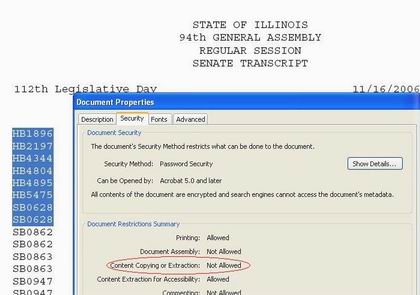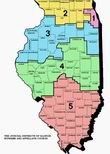 Scanned text-searchable transcripts of the Illinois House and Senate floor debates going back to 1971 are now available on the legislature’s website. Before February 2007 the transcripts available online only went back to 1997. This is a significant development that will assist attorneys and other interested persons better understand the context that existed when a particular law was passed.
Scanned text-searchable transcripts of the Illinois House and Senate floor debates going back to 1971 are now available on the legislature’s website. Before February 2007 the transcripts available online only went back to 1997. This is a significant development that will assist attorneys and other interested persons better understand the context that existed when a particular law was passed.
The Sixth Illinois Constitutional Convention held in 1969-70 drafted our current constitution. The legislature or some other institution should make available online the record of those proceedings, which are contained in seven volumes entitled “Record of Proceedings, Sixth Illinois Constitutional Convention.” A constitutional convention also drafted the 1870 Illinois Constitution. A record of those proceedings is available online here.

 Answer: Don’t read it… let the computer do it.
Answer: Don’t read it… let the computer do it.